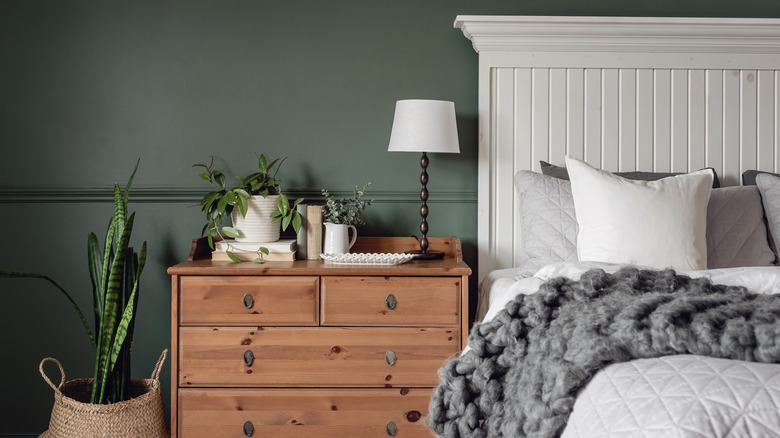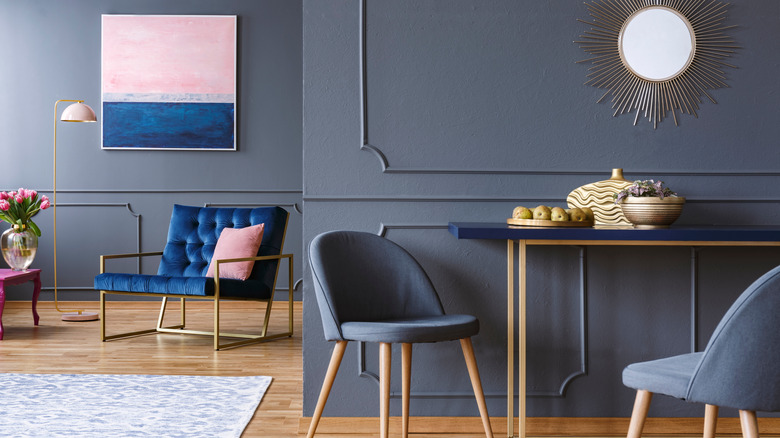Here's What Shade Your Furniture Should Be If Your Walls Are Painted A Dark Color
Painting a room a dark color, such as black, gray, navy blue, or deep green, is sure to add drama. Many choose darker tones for expansive rooms because they make the area feel cozier. However, inky colors can also be used in smaller spaces like hallways or bathrooms to make these areas feel snug and to provide a lasting impression. Another reason you may choose a deep shade is to create the perfect backdrop for hanging artwork or a carefully curated gallery wall.
When designing a room, painting the walls is only the first step. Once you've added a dark paint shade, the difficult part begins: Choosing the right furniture. This can be so challenging because it's often hard to find pieces that complement the walls and don't make the room feel smaller. When choosing the right color of furniture for a dark room, there are two options, and your choice will depend on your specific space.
Creating contrast
Because your walls are dark, it may be best to choose lighter-colored furniture, which will offset the paint tone and make your room feel airier. While the dark walls could make your space feel smaller, the light furniture could brighten the area and make it feel more expansive. This could also draw more attention to your furniture than the walls, which some may desire.
"The key to maintaining balance with [dark, moody hues] is to ensure that your sofa offers a neutral counterpoint," the design experts at King Living Design Studio told Homes & Gardens. "Opt for lighter colored seating to break up darker tones and provide a focal point." They recommend neutrals like light gray or beige, which would make it easier for you to change the room's style in the future. However, pastels or other light colors could also work. White or light to medium wood tones are other great options that will contrast with your walls.
Going monochromatic
The second option is to match the furniture to your walls, which will create a monochromatic look. For instance, if your room is navy blue, you could add a blue couch and chairs in a similar tone. The key to creating a monochromatic space is not having all the pieces be the exact same shade but instead playing with various tones and adding texture to make your pieces stand out against the walls. You can also add neutral pieces in black or white without breaking the monochromatic look. To really create drama, choose all dark furniture, but add sufficient lighting to ensure the space doesn't feel dingy or cramped.
You could always match all the furniture and decorations in the room to the walls. On the other hand, you may decide to match certain elements to the walls but contrast them with other pieces. For instance, you could choose an upholstered couch that matches your green walls but create contrast with light wood side tables or golden accents that will add more interest.


